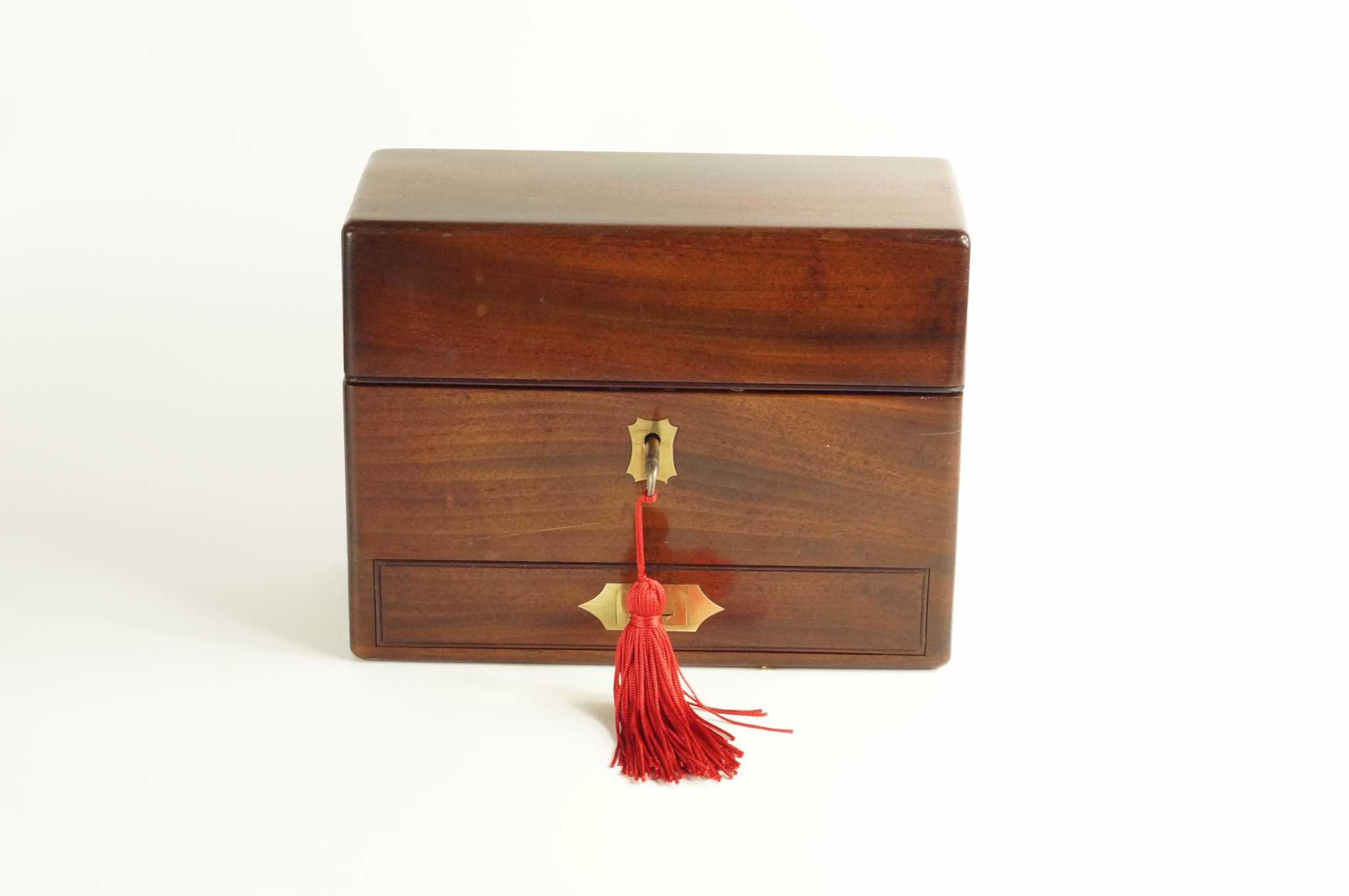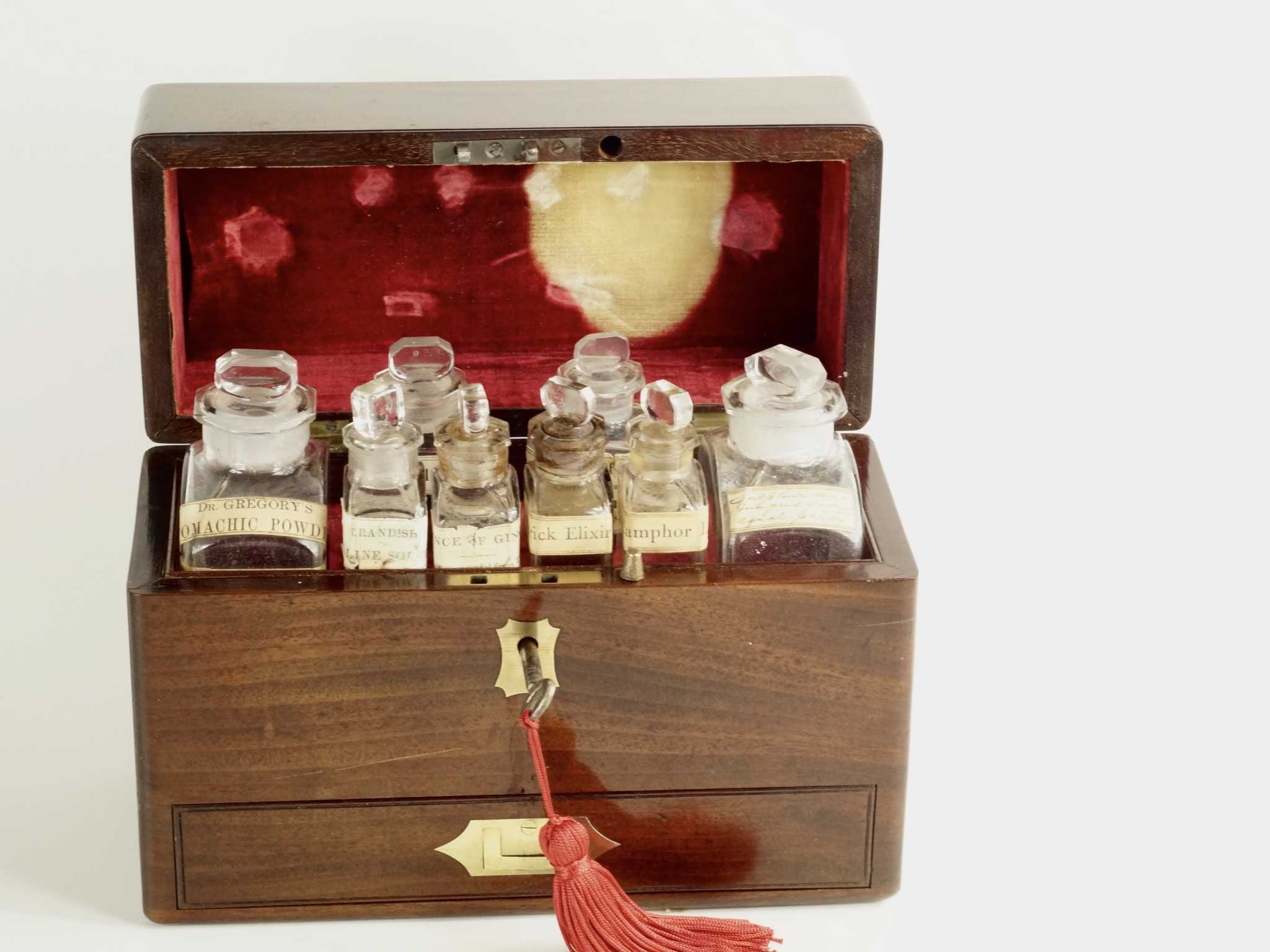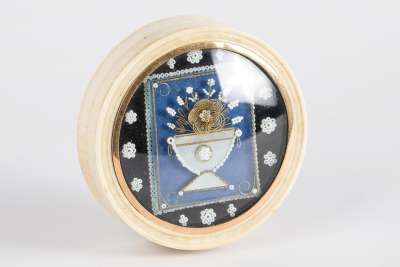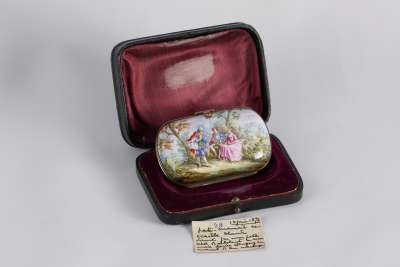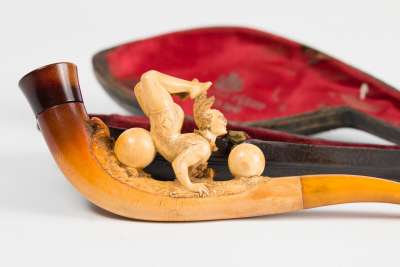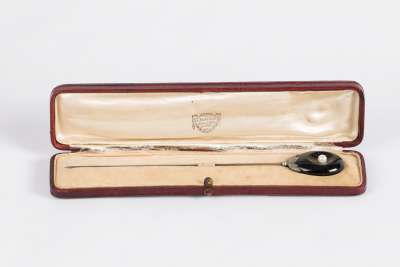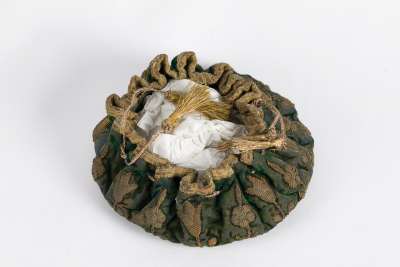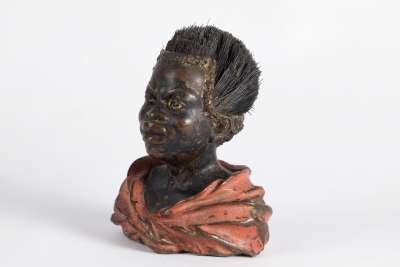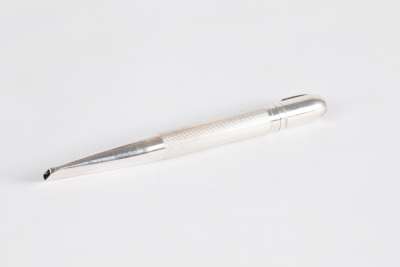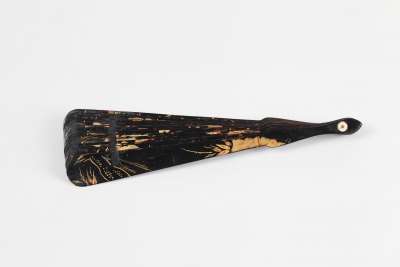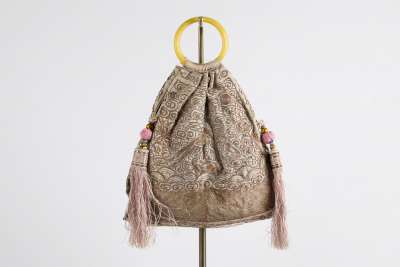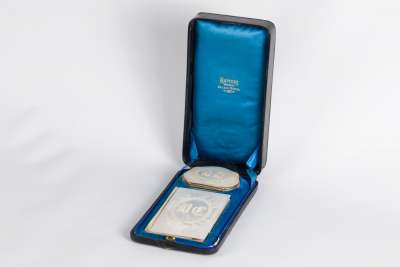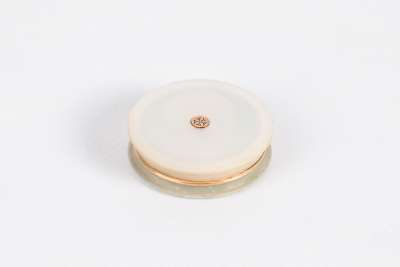This English apothecary box, dating back to circa 1860, showcases the craftsmanship of the era with its mahogany construction and brass detailing. The exterior features a brass escutcheon and a flush-fitting drawer handle, while the interior is lined with red felt. Inside, the box houses eight glass jars, complete with glass stoppers and labels from the notable Godfrey and Cooke Chemists. A brass retaining pin on the front edge secures the drawer, which when opened, reveals a measuring beaker, scales, and weights. The box also includes a fully functional lock and key, adding both security and authenticity to this historical artefact.
Condition Report
The apothecary box is in very good condition, commensurate with its age and historical use. The wear is typical for an item of this period and does not detract from its overall integrity or function. Notably, there is some discolouration on the lining located on the top of the lid, which can be observed in the accompanying photographs. This slight imperfection is expected given the item's age and does not impact its utility or visual appeal.
Dimensions
Weight: 2.525gm, Length: 19cm, Width: 11cm, Height: 32cm.
An Essential Companion for the 19th Century Chemist
This apothecary box was originally designed for use by pharmacists and chemists in the 19th century. It served as a portable kit, enabling the safe and organised storage of various compounds and medicines. The inclusion of scales and a measuring beaker highlights its practical application in precise measurement and preparation of medicinal remedies. These features are indicative of its utility in professional settings, whether for travel or as a stationary piece in an apothecary shop.
Exceptional Craftsmanship of the Victorian Era
This apothecary box is a fine example of Victorian design, blending functionality with elegance. During this period, the use of mahogany was prevalent due to its durability and attractive grain. The brass accents not only provided functional benefits, such as secure locking mechanisms, but also added a decorative element, reflecting the Victorian appreciation for detail. The red felt lining inside the box adds a touch of luxury, typical of the era's design sensibilities, which often favoured rich colours and textures.
The Art of Woodworking and Glassmaking
The construction of this apothecary box required skilled woodworking, evident in the precise joinery and the seamless integration of brass components. The use of mahogany, a favoured wood in the 19th century, demonstrates an understanding of both aesthetics and durability. Additionally, the glass jars with stoppers represent the advanced glassmaking techniques of the time, ensuring airtight seals to preserve the contents. The combination of these materials and techniques reflects the high level of craftsmanship that went into creating functional yet elegant pharmaceutical tools.
Produced by the Esteemed Godfrey and Cooke Chemists
The Godfrey and Cooke Chemists, established by Ambrose Godfrey in 1680, became a reputable name in the field of pharmaceuticals. Following his death, the business was managed by his sons and later acquired by Charles Gomond Cooke in 1797. The firm's relocation to the prestigious Royal Arcade, Old Bond Street, underscores its success and high standing in the industry. This apothecary box, with labels from Godfrey and Cooke, represents the company's long legacy of quality and innovation in the field of chemistry.
Collected by Enthusiasts of Medical Antiques
Apothecary boxes, such as this one, are highly sought after by collectors of medical antiques due to their historical significance and craftsmanship. They offer a tangible connection to the past practices of pharmacy and medicine, providing insights into the evolution of these fields. Collectors are drawn to the intricate design details and the stories behind the items, which reflect the technological and cultural advancements of their time. This box, with its association to Godfrey and Cooke, adds an additional layer of interest, making it a prized possession for enthusiasts and historians alike.
